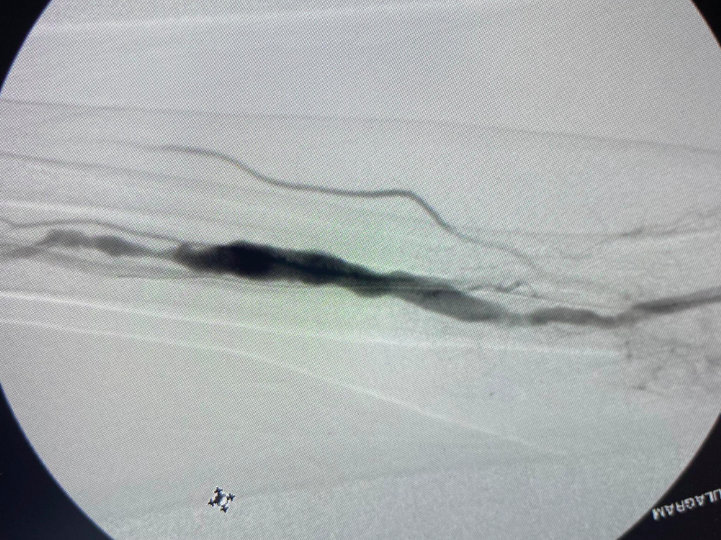Radial Artery to Radial Vein Arteriovenous Fistula Creation: A Novel Technique for Long Term Dialysis Access
Brock Daughtry1, Vernon Horst2
1Brookwood Baptist Health, Vestavia Hills, AL;2Brookwood Baptist Health - Shelby, Alabaster, AL
INTRODUCTION: In patients with chronic renal failure progressing toward need for renal replacement therapy, establishment of permanent dialysis access is paramount to long-term survival. Prior studies have demonstrated the importance of creation of a direct arteriovenous fistula (AVF) in patients with adequate vasculature, beginning in the non-dominant upper extremity; standard outflow veins are the forearm cephalic vein, upper arm cephalic vein, upper arm basilic vein, and, in select patients, the brachial vein. For patients with adequate arterial or venous vasculature in the non-dominant upper extremity, use of synthetic arteriovenous grafts (AVG) or of the dominant upper extremity is required. AVG pose a higher risk of infection and thrombosis when compared to AVF.
METHODS: Presented here is a case in which a novel technique of staged distal radial artery-radial vein AVF (rrAVF) was created as alternative to synthetic graft or brachial vein use due to insufficient standard outflow veins. The decision to create a rrAVF was made after no suitable superficial veins were identified on ultrasound vein mapping pre-operatively. The patient was noted to have a 3mm radial artery and 3mm paired radial veins on peri-operative duplex ultrasound. An anastomosis between the radial artery and lateral radial vein was created at the level of the wrist. The fistula was superficialized in a second-stage operation, several weeks after maturation.
RESULTS: The fistula remains patent 21 months after creation and is being successfully used for hemodialysis.
CONCLUSIONS: This novel strategy represents a creative solution for patients who require permanent hemodialysis access but lack superficial venous anatomy for traditional AVF creation. For patients with adequate diameter of the radial artery and radial veins, we believe that a staged rrAVF is a viable autologous alternative to synthetic grafts or use of the non-dominant upper extremity which has not been previously described in the literature. 
Back to 2023 Display Posters


